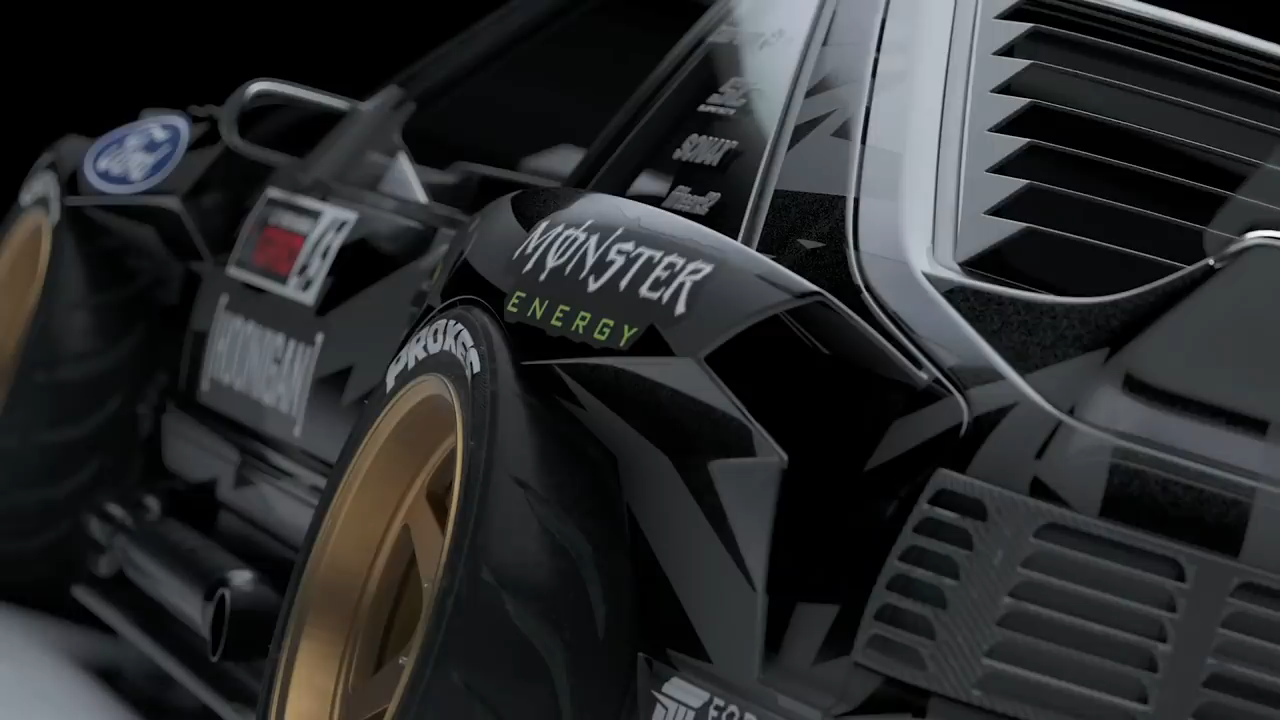
Ken Block is no stranger to modifying cars to the brink of insanity for his Gymkhana videos. With fast cars like the 1,400-horsepower 1965 Ford Mustang Hoonicorn RTR, 1991 Ford Escort RS Cosworth, and 1977 Ford F-150 Hoonitruck, one would assume that Block’s got enough firepower in the garage to last through at least a couple of The Fast and the Furious films. But if you know Block, then you know he’s constantly looking to push the bar even further.
For Block, what comes next is another Ford, no surprises there. With a classic Mustang already in his arsenal, the former rally driver chose an unlikely era of the pony car for the base of his next machine. Block’s latest drift vehicle is based on the Fox Body Mustang – aptly called that because of its Fox platform – that was sold between 1979 and 1993. In usual fashion, the car has been modified almost to the point where it’s unrecognizable and it wears a fitting name: The Hoonifox.
Related Reading
Designed with some help from Ash Thorp, who helped pen a few of Block’s other vehicles and the upcoming Batmobile in the upcoming film The Batman with Robert Pattinson, the Hoonifox is truly an insane-looking car. A widebody kit inspired by WRC, a side exhaust system, rear window louvers, and louvered taillights all keep the Hoonifox firmly in the ‘80s. Spiffy five-spoke wheels, an enormous hood scoop, and massive Toyota R888R tires are also included in the mix. We’re sure Block and Thorp will work together to slap a cool looking livery on the vehicle, too.
As of right now, the Hoonifox is just a rendering and not a real car. But we know Block and his love for building new drift vehicles for his Gymkhana series. Nothing’s final, yet we still have a feeling that this Mustang will come to fruition.
Another major thing that still hasn’t been ironed out yet is what kind of powertrain the Hoonifox will have. Nothing is being ruled out at the moment, as the team could go with an EcoBoost V6 or a Roush Yates V8. Even the all-electric powertrain from the Mustang Mach-E is being considered. One thing’s for sure, the Hoonifox will certainly come with all-wheel drive for those smoky, effortless drifts that Block loves to pull off.
If you’re interested in hearing more about the Hoonifox’s design and getting a look at possible liveries, check out Block’s video below where he and Throp go into more detail about the build. With everything that’s going on with the coronavirus, seeing Block tear up a random patch of Earth in the Hoonifox in Gymkhana 11 would be a welcome respite.
Editors' Recommendations
- 2024 Mustang Mach-E GT performance upgrade: Ford’s fast EV love note
- Ford Shelby Mustang GT500KR Returns With Over 900 HP
- The Ford Mustang Cobra Jet 1400 is an Electric Pony Car for Drag Strips
- John Wick-Inspired Ford Mustang Mach 1 Hitman Is Worthy of Its Assassin Roots


















